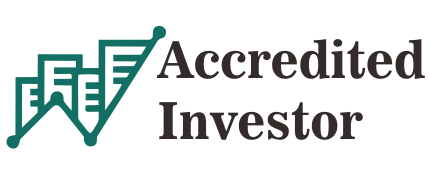Assets under Managed (AUM) are the total market value of investments handled by individuals or entities. According to management definitions and formulas, assets vary from company to company.
In AUM accounts, certain financial institutions include bank deposits, investment funds, and cash in their accounts. Others limit it to freely arbitrable funds because investors give the company the right to trade on its own.
Usually, asset under management is only used to evaluate one aspect of a company or investment. This can usually be seen from management performance and management experience. However, in general, investors may view higher investment flows and higher asset management scale comparisons as positive indicators of quality and management experience.
Why AUM is important
When determining the investment strategy and company strength, the company’s management will monitor the scale of asset management related to the investor’s product flow. Investor companies also use custodial assets as a marketing tool to attract new investors. Compared with competitors, AUM can help investors track the company’s performance more.
AUM may also be an important consideration when calculating expenses. Many investment arrangements charge management a fee, which is a fixed percentage of assets under custody. In addition, many financial advisors and personal financial managers charge clients 1% of the total assets they manage. Generally, the scale of asset management increases as the percentage decreases, so these financial professionals can attract high-value investors.
Most fund managers charge fees based on the size of their funds.
Sometimes referred to as management fee, value fee, or AUM fee, this fee is a fixed price collected from the entire fund and distributed to each investor in proportion.
Regardless of size, fixed asset management is a major issue for every company. Fixed assets are defined as any “permanent” objects used internally by the company, but excluding computers, tools, software, or office equipment.
Although employees can use one or more specific tools, the asset is ultimately owned by the company and must be returned. In this way, if there is no definite way to track these assets, the company will easily lose control.
Fixed asset management enables companies to track assets, asset locations, owners, recovery time, expiration time, and recovery schedule. , And the cost and consumption of each asset.
Since the expenses related to the performance of the fund will not vary from asset to asset, the fund will usually significantly reduce the fees to cover a fixed management fee and create other ways to determine the full compensation of the manager from one hundred percent to several thousand percents.
Mutual funds with very large AUMs point to a large customer base.
Which means that the fund has a high trust factor. AUM can be used as a measure of liquidity. If major repairs are required, Haier AUM can provide cushions. This is especially the case for overnight sensitivity to large-scale compensation by funds and institutional investors. The higher AUM of these boxes means better shock absorption.
One of the factors to consider is the relative size. The size depends on how you compare. Rather than looking at the absolute value of the mutual funds’ managed assets, it is better to compare them with the assets of the corresponding fund to ensure the performance of the fund.
In addition, large AUM cannot automatically guarantee better performance. Although this point deserves attention, the size of the fund’s asset management should not be the only factor affecting your investment decision. Just because others in the market rely on their housing funds to make money does not mean you should do the same.
Consider AUM along with other indicators (such as the historical performance of the fund, such as different market cycles, cost ratios, risk ratios, fund ratios, fund manager reputation, risk management strategies, and compliance).

What Are Assets Under Management (AUM)?
Managed assets refer to the total market value of all assets managed by investment management firm or other financial institutions (such as banks) for their investor clients. The exact definition of AUM varies from company to company. Each of them has his own formula to calculate these important statistics.
There are financial institutions, management companies, hedge funds and banks, whose accounts include customers and cash bank deposits and mutual funds. Others still choose to use only the power of the entrusted administrator to limit this number to the actual entrusted management funds. In this case, the management and relevant fund managers have full responsibility for investors and control of the investment.
Asset management assets define the number of investment funds that an investment management company has controlled. This investment is in a hedge fund or mutual fund. It is usually actively managed by a brokerage company, investment capital company, or portfolio manager.
Managed assets represent the amount of cash in the fund.
It can also display the total assets they manage for the entire customer base. Alternatively, it can be used to indicate the total number of assets managed by the company for only one customer. This will include all funds that managers can use to make transactions. For example, if an investor keeps $50,000 in his portfolio, the fund manager is allowed to apply for the investor’s funds without any permission and obtain permission in advance to buy and sell stocks of his choice.
The actual asset management scale fluctuates every day on every trading day. It depends on the amount of money transferred from one asset fund to another. Asset performance also changes the assets under “Management Number”. As a result, changes in the value of the fund or company investment will result in changes in the total amount of custodial assets.
Each regulatory system sets its own rules for the size of companies that should be strictly controlled. In the United States, when a particular investment management company obtains more than $30 million in funds, the law requires the company to register with the highest regulatory body, the Securities and Exchange Commission.
For investors, AUM Total will determine what level of service they will receive from a brokerage company or financial advisor. For certain types of investments, many companies have minimized AUM. This has a lot to do with the ability level of relevant investors. Some types of investment include minimum purchase agreement requirements.
One of several accounts needs to be used to calculate the total assets under management.
As investment efficiency improves, the number in each case will increase. When new customers join the company or acquire other assets, they also increase the scale of asset management. As consumers leave the company, redeem, withdraw, and close funds, as investment efficiency decreases, this number will decrease. Since AUM includes all investor capital, it may include the assets of the company’s CEO.
The total amount of assets managed by the management company is very important because of the administrative expenses derived from these figures. Indeed, investment companies will charge a certain percentage of management fees based on these assets.
They can also use their AUM number as a marketing tool to attract more investors and assets into the fund. When investors consider their shape, they will feel the scale of the financial management company and its sincerity compared with various competitors in the industry. It still did not disclose the full details of the company’s investment capabilities, options, and various investment strategies.
Understanding Assets Under Management
Although some organizations are drafted differently, the assets under management are the value of investments that some entities are usually responsible for one or more clients.
Because there are many differences regarding the specific investments of institutions that must be included in the AUM account. Generally speaking, the scale of asset management refers only to the value of funds directly managed and invested from customers.
Instruct financial advisors to fill out ADV forms, securities and stock exchanges The SEC says that it only includes “departments that provide permanent or regular surveillance or administrative services.”
Some financial managers will also join customer accounts and add individual shares of mutual funds to their accounts because they will advise customers on the amount of money deposited in the bank and the amount of money deposited in mutual funds, sometimes called assets.
Generally, when you hear information about custodial assets, they refer to the total assets managed by an advisor or broker. You may also hear the advisor use the term to denote the value of his or her own investment. For example, this is usually the case when discussing financial consultant fees. The principal may charge service fees from the assets you manage. It does not involve all the assets you manage. Instead, it identifies the asset you placed under its care.
When reviewing funds, investors usually consider AUM.
As with the company’s market value, custodial assets can also be used as an indicator of fund size. These high-end products invested in AUM have a larger market, making them more liquid and easier to trade.
For example, SPDRS & P500 ETF (SPY) is one of the largest ETFs on the market. It had US$426.4 billion in assets under management, with an average daily turnover of 8.04 million shares. High trading volume means that investors have no liquidity factor when trying to buy or sell ETF stocks.
In contrast, the First Trust Dow 30 Equivalent ETF (EDW) has $14.2 million marks, and the volume of assets under management is very small, with an average of 2,795 shares per day. The liquidity of the fund can be regarded as an investor.
When calculating management fees, AUM is the most important. All fund companies charge fees proportional to the size of the fund, which is called the expense ratio. The percentage of expenses includes management and operating expenses. According to management, the Securities and Exchange Commission has clearly stipulated a ceiling on the ratio of expenditure to mutual funds.
Since this is planned as a proportion of AUM, a larger AUM means a higher fund fee, while a smaller AUM does the opposite.

Calculating Assets Under Management
The asset value of fund management can never be determined. It depends on the number of investors and the returns obtained by the fund.
Positive profits increase the total investment and can also attract new investment, which leads to an increase in AUM. Negative profits will have the opposite effect. The restoration of the equipment will also affect the AUM.
The role of funds uses a variety of methods to calculate custody assets. When the fund continues to receive positive returns, its total investment will increase. Good performance can attract new assets and more investors, which leads to an increase in the scale of asset management.
Similarly, if the market value or investment performance declines, assets may decline. The situation is the same when an unexpected fund closes or when investors withdraw their bets. Asset management requires investment in all company products. This includes the shares of the company’s CEO.
Different organizations have different AUM calculation methods. Some of these differences are structural-mutual funds are calculated differently than financial advisory companies.
Some are also based on priority.
For example, some organizations will define assets extensively, and these definitions are at their discretion. This is not to say that the company has complete control over how AUM is defined. The SEC also has restrictive rules that can and cannot be included.
Regarding AUM accounts, there is currently some portfolio management software for you. Because it used to involve a lot of manual data analysis, the computer is now calculating costs and merging them all. Mutual funds, especially large funds, are constantly updating their asset management scale, which can also be referred to as net assets.
Since AUM accounts involve determining the market value of assets, the daily AUM fluctuations of any business are normal. This is because the value of investments such as equity will fluctuate as the value is acquired. Today, as the value of existing assets grows, mutual funds start at US $190 billion. Today the office is in good condition, and today it is US $192 billion.
There are different methods of calculating managed assets between companies. When investment efficiency increases or new customers and new assets are purchased, the total assets of the managed company will increase. Factors leading to a decline in asset management scale include loss of investment performance, fund failure, and market value decline due to consumer recovery.
Managed assets may be limited to the capital invested in all company products, or may include capital owned by managers of investment companies.




